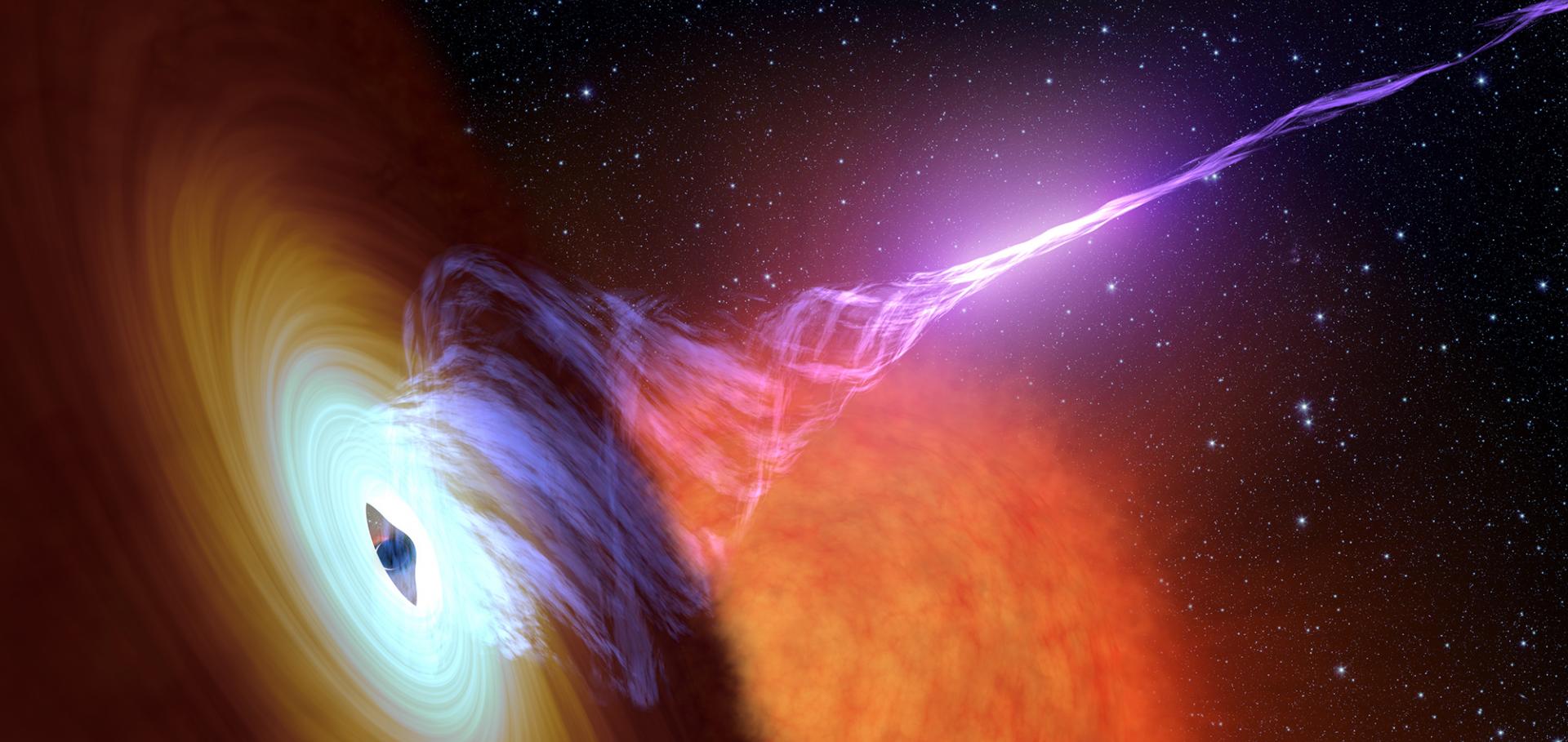Mass and spin measurements for the neutron star 4U1608-52 through the relativistic precession model
(2019)
A rapidly changing jet orientation in the stellar-mass black-hole system V404 Cygni
Nature Nature Research 569:7756 (2019) 374-377
Abstract:
Powerful relativistic jets are one of the main ways in which accreting black holes provide kinetic feedback to their surroundings. Jets launched from or redirected by the accretion flow that powers them are expected to be affected by the dynamics of the flow, which for accreting stellar-mass black holes has shown evidence for precession1 due to frame-dragging effects that occur when the black-hole spin axis is misaligned with the orbital plane of its companion star2. Recently, theoretical simulations have suggested that the jets can exert an additional torque on the accretion flow3, although the interplay between the dynamics of the accretion flow and the launching of the jets is not yet understood. Here we report a rapidly changing jet orientation—on a time scale of minutes to hours—in the black-hole X-ray binary V404 Cygni, detected with very-long-baseline interferometry during the peak of its 2015 outburst. We show that this changing jet orientation can be modelled as the Lense–Thirring precession of a vertically extended slim disk that arises from the super-Eddington accretion rate4. Our findings suggest that the dynamics of the precessing inner accretion disk could play a role in either directly launching or redirecting the jets within the inner few hundred gravitational radii. Similar dynamics should be expected in any strongly accreting black hole whose spin is misaligned with the inflowing gas, both affecting the observational characteristics of the jets and distributing the black-hole feedback more uniformly over the surrounding environment5,6.Evidence for Late-stage Eruptive Mass-loss in the Progenitor to SN2018gep, a Broad-lined Ic Supernova: Pre-explosion Emission and a Rapidly Rising Luminous Transient
(2019)
A detailed radio study of the energetic, nearby, and puzzling GRB 171010A
Monthly Notices of the Royal Astronomical Society Oxford University Press 486:2 (2019) 2721-2729
Abstract:
We present the results of an intensive multi-epoch radio frequency campaign on the energetic and nearby GRB 171010A with the Karl G. Janksy Very Large Array and Arcminute Microkelvin Imager Large Array. We began observing GRB 171010A a day after its initial detection, and were able to monitor the temporal and spectral evolution of the source over the following weeks. The spectra and their evolution are compared to the canonical theories for broad-band GRB afterglows, with which we find a general agreement. There are, however, a number of features that are challenging to explain with a simple forward shock model, and we discuss possible reasons for these discrepancies. This includes the consideration of the existence of a reverse shock component, potential microphysical parameter evolution, and the effect of scintillation.Identifying transient and variable sources in radio images
Astronomy and Computing Elsevier 27 (2019) 111-129


